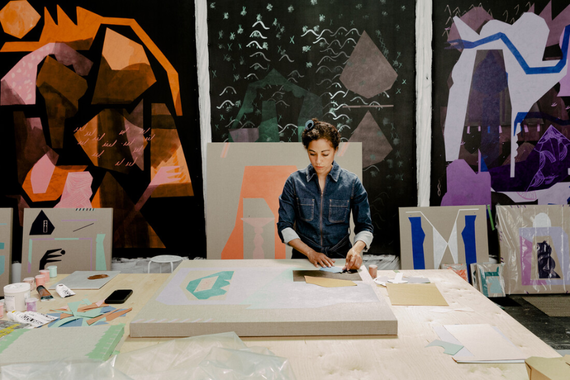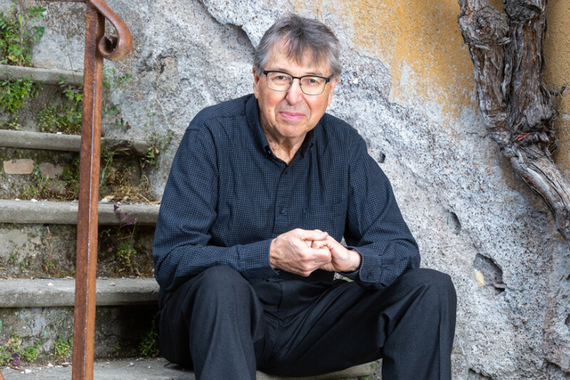Voice to Vision: Accessing Memory Through Imagery and Symbols
“These works become a kind of testimony and a memorial, but also a pathway for healing, and it's been a transformational experience for many people.” This behind-the-scenes documentary showcases the creative process of Voice to Vision, a 2022-23 CLA Engagement Hub residency. The program was founded in 2002 by the late Steven Feinstein and Professor Emeritus David Feinberg, who now directs the project in collaboration with the Center for Holocaust and Genocide Studies at the University of Minnesota.
A Welcoming Environment
Associate Director Kirk Allison explains the origin of Voice to Vision's name: each project begins with the voice of the storyteller, which is then adapted to a visual artwork, a completed vision. The program, Allison says, “provides an opportunity for people who aren't necessarily artists, who have lived and survived a traumatic situation, sometimes personal, sometimes political, to create out of their story.” Opening an art space to individuals with varying experience levels is an important part of the program. “There’s no such thing as bad drawing,” Feinberg says. “That's a prejudice based on a cultural indoctrination that people have when they're young.”
At the heart of Voice to Vision is the joy of creating in a spontaneous and collaborative fashion. “It can begin with just a few marks on a canvas that are arbitrary,” Allison explains, “and then starting to find meaning as people discuss elements.” Each group member can weigh in on and contribute to each other’s work. “As the idea gets processed, it grows and grows and grows,” Feinberg says. “After a while, you lose track of who said what to cause the moves and progression.”
Voice to Vision provides a space for storytellers to not only create from their experiences but also contend with them. Ukrainian storyteller Luda Anastazievsky says, “I think it's important that this project gives voice to people who can express their feelings about the tragic events that sometimes we don't have a chance to process.” Allison explains, “You might call it an arc of hope that comes out of this, and the people find it an experience of growth.”
Explore collections of Voice to Vision artwork, documentation, narratives, and videos.
Education Through Art
As storytellers and project members collaborate on each other’s art, they have the chance to learn about a wide range of events and cultures. “What I learned by doing Voice to Vision is how much I didn't know about the world,” Feinberg says. “When I'm a professor at the U, I'm supposed to know more than the average person about the world, and as I met different people from different cultures, all of a sudden I became a historian.”
Voice to Vision members are far from the only ones learning from each other’s work. The program also introduces their important stories to the public. Anastazievsky says, “In Minnesota, we have people from so many different countries that lived through a history of mass atrocities and genocides, and so it's important that they have their voices heard.”
Across over two decades, Voice to Vision has shared vital stories while inviting audiences to challenge their beliefs and expand their understanding of the world. “I really think that collaboration doesn't just start and end with the storyteller… And it doesn't end with the artwork itself,” says storyteller Jennifer Barnett-Hensel. “That artwork lives on and it breeds and has life to it.”
Voice to Vision: Finding the Unexpected Significance in Survivor Stories
Learn more about Voice to Vision’s Hub residency in this feature article, which includes quotes from director David Feinberg and storyteller Thet Oo Maung.
Read: “Finding the Unexpected Significance in Survivor Stories”
This story was written by Max Pritchard, an undergraduate student in CLA.


